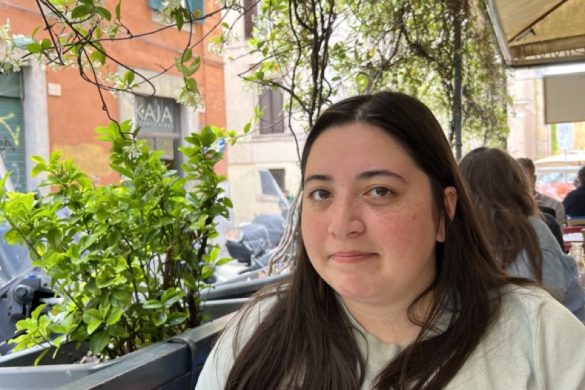Many students may be disappointed about the way this semester is turning out. After the chaos of the spring, hopes were high for a normal fall semester. Now, school bears little resemblance to the educational experience we’ve grown accustomed to and instead looks a lot like sitting at a desk and staring at a computer for a few hours— not the kind of education I expected to receive at the University of Indianapolis.
Of course in times such as this, safety precautions must be taken to keep us healthy and limit the spread of disease. Moving some courses online is a key part of this and can reduce social contact and exposure to potential sources of infection. However, UIndy moved a lot of courses and even entire majors fully online, perhaps beyond what is reasonably necessary.
Some students understandably may not be comfortable in a physical classroom. Those with risk factors or frequent contact with susceptible populations have good reason to avoid these circumstances. Group gatherings are risky, and the desire to avoid personal contact is completely understandable and should be accommodated.
However, there are some who may think that the risks that come with showing up to class (with appropriate safety protocols) are sufficiently low and the pros of learning in-person outweigh the cons. After all, online education is tricky both to teach and learn. Even after our online spring semester, many students and professors may not be adjusted to e-learning or ready for an entire semester of digital instruction.
Students studying certain subjects may not have any choice but to take online courses, however. A simple perusal of this semester’s course offerings reveals that many majors offer few or no in-person options.
The majority of the courses listed in the course catalog for Biology, Communication, Computer Science, Criminal Justice, Global Languages, Philosophy, Physics, and Religion are only offered online. Other areas— like Art, Business, Education, Psychology, and Theatre— are mostly online with a few in-person courses for hands-on work, such as ceramics. Meanwhile, Accounting, Chemistry, Engineering, Finance, History, Kinesiology and Nursing have a large number of in-person or hybrid courses and make up the majority of the in-person courses offered.
For some of these subjects, the decision to prioritize in-person interaction seems rather obvious. After all, practical areas such as Nursing require much more in-person interaction to be taught and learned effectively than more abstract majors like Religion. Still, this connection only makes sense for a few of the areas and doesn’t hold up under more scrutiny. For instance, it is not immediately clear why History and Finance have options to meet in person while Biology and Philosophy do not.
For students whose courses are predominantly online but who may wish to be in a physical classroom, this can seem a little unfair, especially when one considers the lack of adequate explanation or support in the difficult business of remote study. It also does not provide much of a reason to stay engaged with campus culture or even be on campus in the first place.
The financial aspects of online courses make even less sense. According to UIndy’s accounting office, “tuition is charged at the same rate whether it be online or in person.” As a small private university, UIndy has a fairly high cost compared to most public schools. When this cost goes to an online education— rather than an education through expected, traditional methods— the cost seems unreasonably high.
The price seems even greater when compared to the average cost of an online degree program, especially since there is little difference in quality between the two, as most of UIndy’s online courses are just being developed this year, while exclusively online colleges have had quite a few years to put together a solid program. For those looking to save money, this should at least make one consider the possibility of attending a cheaper online school, potentially saving thousands of dollars.
The current situation is tenuous and adjustments should be expected and planned for as this crisis continues to unfold. Still, many colleges across the U.S. do believe they can provide a predominantly in-person experience for students who wish to get one. According to the College Crisis Initiative, some Indiana schools such as Purdue, Butler, Marian and Ball State will be primarily in-person. Some top-tier universities, such as Stanford, Yale and Princeton will also be mostly in-person. This is only a small fraction of the 622 other colleges planning to have predominantly in-person experiences.
Of course, the safety of students is and should always be the highest priority, but if these institutions believe they can offer a suitable traditional education while protecting public health, perhaps we should consider why our university doesn’t believe it can do the same. Or, at the very least, perhaps we should ponder why some majors have more in-person learning opportunities than other areas of study.








